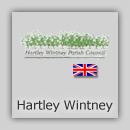History of Hartley Wintney Twinning Association
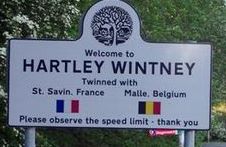 The formal ceremony that sealed the twinning relationship between Hartley Wintney with Saint Savin was signed and celebrated in Saint Savin on 18 July 1981. The following year on 3 July the Twinnng Oaths were renewed at a ceremony in Hartley Wintney.
The formal ceremony that sealed the twinning relationship between Hartley Wintney with Saint Savin was signed and celebrated in Saint Savin on 18 July 1981. The following year on 3 July the Twinnng Oaths were renewed at a ceremony in Hartley Wintney.
Saint Savin had been acquainted with twinning for several years through its links with Oostmalle and Heausenstamm. However twinning was a new experience for Hartley Wintney. It was first suggested in 1977 at a meeting with parents and Greenfields Primary School. An officer of the Local Education Authority said that a good way to encourage children to have an interest in learning French would be for the village to twin with a village in France.
One of the parents at this meeting was Nigel Beazley, a member of the Parish Council. He won a positive response from the Council to a proposal to consider twinning for Hartley Wintney. A sub-committee was appointed to investigate what this would entail. Meetings were held with the London based Joint Twinning Committee of the Local Authorities Association (JTC) and contacts were made with several twinned villages similar in size and situation to Hartley Wintney. The sub-committee recommended in favour of twinning and stated that for any twinning to be recognised it must be approved by the appropriate local authority – the Parish Council. The Paris Council accepted the recommendation and also decided to adopt the practice in most of the villages contacted of devolving actual responsibility for twinning the twinning to an association or committee of those actively involved, this to include responsibility for financing themselves. It was made clear that the Council rates would not be used for financing twinning.
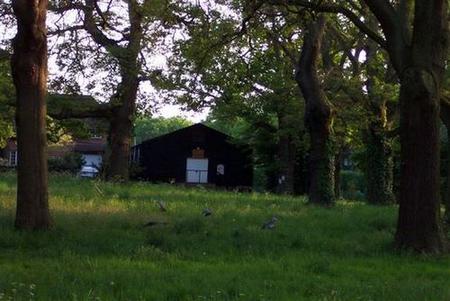 The Parish Council’s endorsement of twinning and the proviso was made known to a public meeting of those supporting twinning. A Steering Group, chaired by Nigel Beazley, and including Louise Cox who succeeded Nigel as Chairman in 1987, was given the tasks that included drafting the constitution of a twinning association, proposing how matters of organisation and finance were to be determined and choosing twin town.
The Parish Council’s endorsement of twinning and the proviso was made known to a public meeting of those supporting twinning. A Steering Group, chaired by Nigel Beazley, and including Louise Cox who succeeded Nigel as Chairman in 1987, was given the tasks that included drafting the constitution of a twinning association, proposing how matters of organisation and finance were to be determined and choosing twin town.
By the end of 1978 the Steering Group had finished most of its work except choosing a twin. The JTC had been informed that Hartley Wintney wanted to twin with a French town of similar size and as far south in France as could be reached in a day of travelling. This and general information was exchanged with the JTC French counterpart which receiving requests and information from places in France wanting English twins. Late in 1978 Hartley Wintney received details about Saint Savin. They created a good impressing and it was learnt that Saint Savin had reacted well to the information about Hartley Wintney. In the first week of July 1979 a part from Saint Savin, led by Fernand Chaussebourg, paid visit to Hartley Wintney and Hartket Wintney made a return visit in October. Both visits were a great success and it was agreed that preparations for a formal twinning should commence.
The first official exchange was made in 1980. A party of 12 schoolchildren visited Saint Savin for 12 days. In July children from Saint Savin visited Hartley Wintney. From then onwards exchange visits by children took place annually,. Initially the Hartley Wintney children were principally from Hartley Wintney with parents involved with the twinning but this changed radically in very critical circumstances. One morning early in 1980 Philippe de Rochefulon, Chairman of Saint Savin Twinning Committee, telephoned Nigel Beazley to say that the twinning venture was liable to collapse as their secondary school was on the verge of twinning with an English school in the Midlands. If this were to go ahead support for twinning with Hartley Wintney would collapse. Would the secondary school for Hartley Wintney ()Robert May) agree to twin with Saint Savin school? Robert May agreed and twinning was saved. The school exchanges (about 25 children each way) were open to children from anywhere in the school catchment. The Twinning Association constitution was amended to provide for an ex-officio member of the committee from Robert May and for may years the Association played a part in financing and providing entertainment for the French Children’s visits.
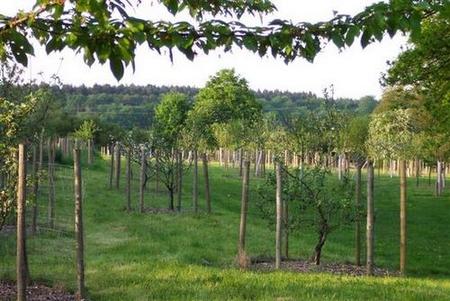 The first adult visit was to Hartley Wintney from Saint Savin in May 1981. A reception was held at Elvetham Hall attended by the Chairman of Hart District Council, the Chairman of Hartley Wintney Parish Council and other dignatories from the District particularly representatives from the neighbouring parishes of Winchfield, Mattingley, Heckfield and Rotherwick which had been invited and agreed to fall within the compass of the twinning agreement. This visit provided a fitting prelude to the formal twinning ceremonies that were to take place in Saint Savin in July and in Hartley Wintney in 1982.
The first adult visit was to Hartley Wintney from Saint Savin in May 1981. A reception was held at Elvetham Hall attended by the Chairman of Hart District Council, the Chairman of Hartley Wintney Parish Council and other dignatories from the District particularly representatives from the neighbouring parishes of Winchfield, Mattingley, Heckfield and Rotherwick which had been invited and agreed to fall within the compass of the twinning agreement. This visit provided a fitting prelude to the formal twinning ceremonies that were to take place in Saint Savin in July and in Hartley Wintney in 1982.
The Twinning ceremonies were memorable occasions. At Saint-Savin the twinning oath was taken and the agreement signed in the garden of the historic abbatial church, gifts were exchanged and speeches made. Later oak trees were planted in different parts of the canton and toasts to England, France and Europe punctuated the celebrations that were turning twinning into a reality. Given that the idea of Hartley Wintney twinning was born at Greenfields it was appropriate that the school should become the site of the renewal of the twinning oath in 1982. The presence and speech of Lord Soames, son-in-law of Sir Winston Churchill and a local inhabitant, made the occasion memorable.. Even though heavy rain drove everybody into the school hall the Robert May School orchestra, chair-less, played the Marseillaise a performance which the French highly commended. For the weekend all the shops had appropriate window displays.
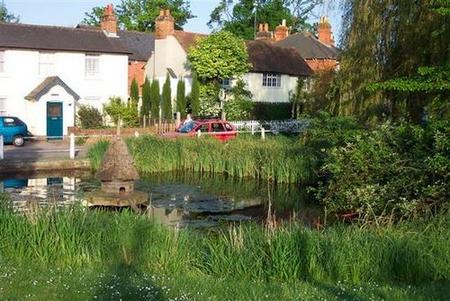 From then onwards each partner made an exchange visit on alternate years. Travel was by coach, the stays lasted two or three nights; usually visits were made to local sights of interest; entertaining took place within and between families and there was always the special dinner; language differences never seemed to be a barrier. Thus friendships were made and strengthened. Though the JTC subsidised most of the cost of the initial exploratory visit to Saint-Savin and the travelling and entertaining required for the 1981 and 1982 ceremonies , the cost of twinning activities from then onwards had to be self-financed. The Parish Council helped on special occasions. Fund raising became a major concern of the Twinning Committee; the funds required for hosting and entertaining visitors once every two years were substantial but the money in the bank was always there. The social activities were a form of outreach into the wider community and did attract new members and lead to many new friendships. Twinning could say that it had made a positive contribution to Hartley Wintney.
From then onwards each partner made an exchange visit on alternate years. Travel was by coach, the stays lasted two or three nights; usually visits were made to local sights of interest; entertaining took place within and between families and there was always the special dinner; language differences never seemed to be a barrier. Thus friendships were made and strengthened. Though the JTC subsidised most of the cost of the initial exploratory visit to Saint-Savin and the travelling and entertaining required for the 1981 and 1982 ceremonies , the cost of twinning activities from then onwards had to be self-financed. The Parish Council helped on special occasions. Fund raising became a major concern of the Twinning Committee; the funds required for hosting and entertaining visitors once every two years were substantial but the money in the bank was always there. The social activities were a form of outreach into the wider community and did attract new members and lead to many new friendships. Twinning could say that it had made a positive contribution to Hartley Wintney.
Two major events in the early years: the firsts related to Oostmalle, the Belgian town twinned with Saint-Savin. In 1983 Oostmalle decided to consider twinning with either Tonbridge (twinned with Heusenstamm) or Hartley Wintney. After visiting both the choice was Hartley Wintney. Then silence, no more was heard, no replies to letters. Fifteen years were to pass before the enlarged community of Malle renewed twinning talks with Hartley Wintney.
The other major event was the changing relationship between the Association and Robert May. At first there was the change required by the French education authorities that school exchanges must be in school term times so that the public money is seen to be used for educational purposes rather than for a shared holiday. This effectively precluded any participation by children going to schools other than Robert May. The Twinning Committee continued to help the school by providing some recreational activity during the French visits. The school was entirely self-sufficient and was twinned with a French school equally self-sufficient. With the passage of time the Twinning Committee’s involvement and help diminished. In 1987,1988 and 1989 individual members of the twinning association joined the school visits to Saint-Savin to help make up to make up the required adult to children ratio. By about 1990, apart from the school’s 10th anniversary of twinning celebrations that year, contacts had virtually ceased. .
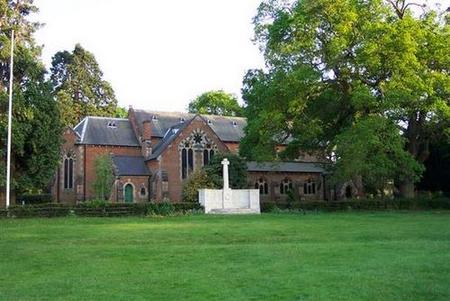 In 1996, as Chairman of Hartley Wintney Parish Council, Nigel Beazley attended the celebrations in Saint- Savin, of its 25 years of twinning with Heusenstamm. There he met and spoke about twinning with the Secretary of the Malle Twinning Association; this led to an invitation to the election celebrations of the new Burgemeester of Malle. There it became abundantly clear that Malle wished to twin with Hartley Wintney. The Hartley Wintey Twinning Committee were not as enthusiastic but after visits to Malle by those who were – Friends of Malle - and visits from Malle, a twinning agreement was signed in June 1999 by the Burgemeester of Malle and Hartley Wintney’s new Parish Council Chairman, Frank Fowler. In August 2000 the renewal of the twinning oath and the signing ceremony took place at Stratfield Saye, near Hartley Wintney, where the Duke of Wellington, Prince of Waterloo, added his signature to the agreement.
In 1996, as Chairman of Hartley Wintney Parish Council, Nigel Beazley attended the celebrations in Saint- Savin, of its 25 years of twinning with Heusenstamm. There he met and spoke about twinning with the Secretary of the Malle Twinning Association; this led to an invitation to the election celebrations of the new Burgemeester of Malle. There it became abundantly clear that Malle wished to twin with Hartley Wintney. The Hartley Wintey Twinning Committee were not as enthusiastic but after visits to Malle by those who were – Friends of Malle - and visits from Malle, a twinning agreement was signed in June 1999 by the Burgemeester of Malle and Hartley Wintney’s new Parish Council Chairman, Frank Fowler. In August 2000 the renewal of the twinning oath and the signing ceremony took place at Stratfield Saye, near Hartley Wintney, where the Duke of Wellington, Prince of Waterloo, added his signature to the agreement.
The twinning with Malle greatly transformed twinning for Hartley Wintney. Activities entered into jointly, such as the triathlon, selling Belgian beer at the annual festival and a Malle band playing for dances in the Victoria Hall attracted a younger age group albeit no younger than the first ‘twinners’ were in 1980. The committees for twinning with Saint-Savin and the Friends of Malle were separate for some time but eventually came together under the name Hartley Wintney Twinning Association and with a revised constitution.
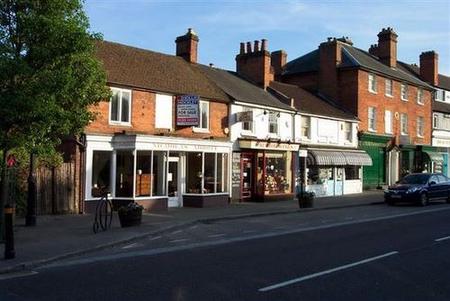 Thirty years after the start of twinning in Hartley Wintney the average age of those more interested with Saint-Savin twinning is nearly thirty years older. Very successful years of social activities, raising adequate funds for trips to France which all have enjoyed seem to be coming to an end. Past successes may have blinded participants to the changes the future would bring and which would have to be embraced to attract younger people. The twinning with Malle seems to be appealing to younger people and changing the minds of those older. With the new century a new chapter of the history of the Twinning Association has been opened.
Thirty years after the start of twinning in Hartley Wintney the average age of those more interested with Saint-Savin twinning is nearly thirty years older. Very successful years of social activities, raising adequate funds for trips to France which all have enjoyed seem to be coming to an end. Past successes may have blinded participants to the changes the future would bring and which would have to be embraced to attract younger people. The twinning with Malle seems to be appealing to younger people and changing the minds of those older. With the new century a new chapter of the history of the Twinning Association has been opened.
Source: Nigel Beazley, HWTA
November 2008.
